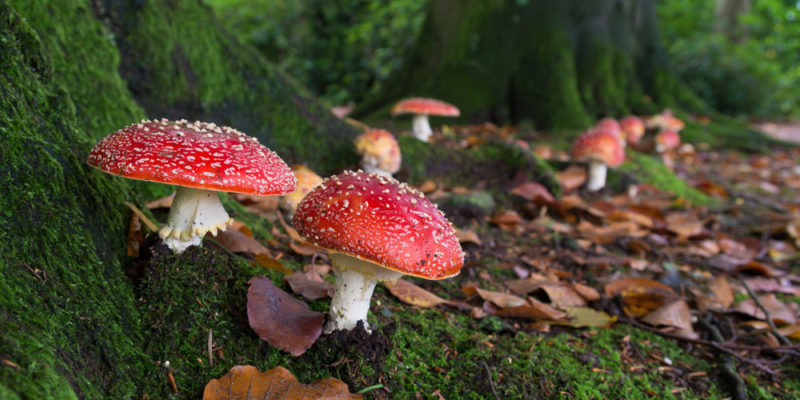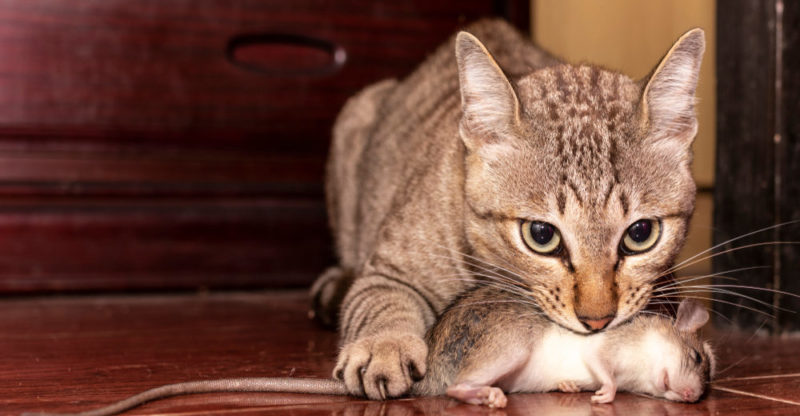We explain what heterotrophic organisms are, the types that exist and how they feed. Also, what are its characteristics and examples.
What are heterotrophic organisms?
All those organisms that must feed on the organic matter of other living beings are known as heterotrophs . Through food they obtain the energy and resources necessary to maintain the functioning of their metabolism, grow, develop and reproduce.
Its name comes from the Greek heteros , "other", and trophos , " food " . They are distinguished from autotrophic organisms , capable of making their own organic matter from inorganic compounds and an external energy source (such as sunlight).
Whether they hunt other living things, feed on their carcasses, or feed on decaying organic matter in soils , heterotrophic organisms are ecologically considered consumers . In other words, they are incapable (in the long run) of existing in an environment devoid of other living beings that serve them in one way or another as a food source.
Origin of heterotrophic organisms
There are numerous theories about the beginning of life on Earth . One of them maintains that autotrophic organisms were the first since they are self-sustaining life forms.
In the extreme conditions of the planet in formation, only these simple organisms could obtain energy. Only after the development of autotrophs was the existence of heterotrophs possible , capable of taking advantage of the organic matter of the former.
However, other theories hold the opposite . For example, Aleksandr Oparin and John Holdane suppose that during the primitive times of the planet, the formation of the first cells occurred spontaneously. These primitive cells, which Oparin called "coacervates", would have fed on the free and surrounding organic matter. There is no scientific consensus on this yet.
Types of heterotrophic organisms

Heterotrophic organisms can be classified according to their role in the food chain , that is, according to the mechanism they use to consume foreign organic matter:
- Primary consumers or herbivores. Those that feed directly on the organic matter of the producers (autotrophs), as occurs with animals that consume plants , their fruits, roots or trunks.
- Secondary consumers or carnivores . Those that feed on the organic matter of primary consumers, whom they hunt. There may be different links of predators between these and the end of the chain.
- parasites Those that consume the organic matter of the body of other living beings, causing damage to it but without preying on it, but rather existing together with it, either outside (ectoparasites) or inside (endoparasites) of its body.
- Decomposers. Those that consume dead and decomposing organic matter, that is, the remains of hunting predators (scavengers), the body residues of other living beings or even their excretions.
- omnivores . Those that can consume organic matter from virtually any source, whether they are primary or secondary consumers, decomposing organic matter, or producers.
Stages of heterotrophic nutrition
Heterotrophic nutrition can be summarized in the following stages:
- Ingestion. The organism captures another and ingests it (wholly or partially), filling its digestive cavities with its organic matter.
- Digestion. The organic matter consumed is disintegrated by various chemical reactions inside the consumer's body, reducing it to more basic compounds that can later be assimilated.
- Metabolism. Substances extracted from organic matter and reduced to simple elements are subjected to chemical reactions. In this way, more complex molecules richer in biochemical energy (anabolism) are manufactured , which are later oxidized to release a greater amount of chemical energy than that invested in their manufacture (catabolism). This energy is used for the vital processes of the consumer.
- Excretion. The metabolic by-products, together with the unusable or surplus organic matter, are discarded from the body, along with the gases of respiration (CO 2 ), although by different routes: defecation ( matter ) and exhalation ( carbon dioxide ).
Heterotroph feeding

The specific diet of heterotrophic organisms may consist of:
- Parts of the body, or the whole body, of other lower heterotrophs or their offspring, either hunted on their own or the result of someone else's hunt.
- Body parts of autotrophic beings, such as bacteria , plants, algae , etc.
- Fruits, shoots and other products of autotrophic beings such as plants.
- Excretions, eggs, internal substances or waste substances of other living beings.
- Organic residues accumulated in the soil and in the process of decomposition (humus).
Habitat of heterotrophic organisms
Heterotrophic organisms are found in all habitats where the number of autotrophic organisms is sufficient as food for the first chain of consumers. Eventually, a second link can be added that preys on them.
Although life adapts to virtually all conditions, heterotrophs are not usually found in the most extreme conditions . For example, only autotrophic organisms such as chemosynthetic organisms can live inside volcanoes .
ecological role

Heterotrophic organisms exercise functions of control and regulation of the lower populations in the food pyramid in an ecosystem . By consuming other life forms, they help keep their numbers stable.
On the other hand, they force other organisms to compete for survival . This process is called natural selection and, according to accepted and proven theories, they are the engine of evolution and the origin of species.
However, a disproportionate growth of consumers can cause an imbalance. Ultimately it can lead to the extinction of the consumed life forms, and then your own.
Trophic or food chain
In the food chain, or food chain, matter and energy are transferred from one group of living things to another . All living beings in an ecosystem intervene in it in different ways.
In this circuit, each organism finds the resources to nourish itself , grow and reproduce. Then, the energy and matter that it consumed re-enters the chain, serving as food for the next link.
The food chain can be summarized as:
- Producers (autotrophs) make their own organic matter. For this they use the inorganic matter of the soil, the air and the water .
- The primary consumers (heterotrophs) feed on part of the organic matter coming from the producers.
- Secondary consumers (predatory heterotrophs) feed on primary consumers, to grow, develop and reproduce.
- Both primary and secondary consumers eventually perish and their organic matter is used by decomposers (detritophagous heterotrophs) that reduce it to inorganic matter in the soil.
- The producers take this inorganic matter and the cycle begins again.
Differences with autotrophs

The fundamental difference between autotrophs and heterotrophs lies in how they obtain the organic matter necessary for their biological functions (grow, develop and reproduce).
Autotrophs produce it by consuming inorganic matter from the environment and energy from some external source. Heterotrophs cannot make organic matter from inorganic substances, and therefore must take it from other living things.
photoheterotrophs
Certain types of bacteria and unicellular organisms are capable of synthesizing their own organic matter using sunlight . That is, in this sense they resemble autotrophs.
However, they cannot get all the carbon they need from carbon dioxide , but must also consume leftover organic matter from the environment. Therefore, they are not completely autotrophic. They are considered an intermediate category.
Examples of Heterotrophic Organisms
Most of the known living things we deal with on a daily basis are heterotrophs. For starters, they are the entire animal kingdom, including fish , insects , earthworms, mammals , birds , and humans . In addition, they include fungi , spoilage bacteria, and most protozoa .
The above content published at Collaborative Research Group is for informational and educational purposes only and has been developed by referring reliable sources and recommendations from technology experts. We do not have any contact with official entities nor do we intend to replace the information that they emit.
Veronica is a culture reporter at Collaborative Research Group, where she writes about food, fitness, weird stuff on the internet, and, well, just about anything else. She has also covered technology news and has a penchant for smartphone stories. .
Leave a reply
Your email address will not be published. Required fields are marked *Recent post

Sport: What Is It, Types, Risks, Features, Characteristics and Examples

Dogs: Emergence, Features, Characteristics, Feeding and Breeds

Story: Definition, Elements, Structure, Features and Characteristics

